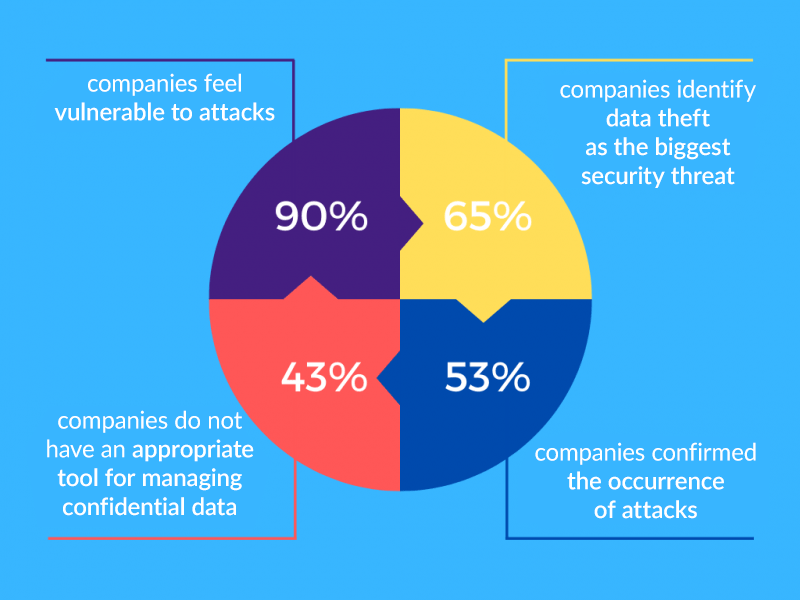The use of Data Loss Prevention (DLP) systems is an essential measure to ensure the security of an organization’s data. Given the continuous increase in cybercrime, DLP systems should be supported by artificial intelligence to cope with advanced external attacks.
Data Loss Prevention – an essential element of protection
DLP systems are solutions that play an essential role in an organization’s security strategy. Their main purpose is to ensure the protection of sensitive data in motion, at rest and in use. DLP technology is essential to ensure an elementary level of data security. It is used to track a company’s documents and organize them into security protocols. Its tasks include classifying data to determine its sensitivity and confidentiality, and imposing file transfer restrictions to avoid leaks to unauthorized locations.
The problem of classic Data Loss Prevention solutions
The main problem faced by classic DLP system solutions is the limitation in understanding data. Data Loss Prevention only analyzes metadata and textual content. In today’s multimedia world, this is a considerable obstacle. Examining data based only on its textual content is often insufficient. Employees exchange information among themselves in the form of photos, voice recordings or video clips. A classic DLP system cannot read this and thus provide an adequate level of security. In order to ensure effective protection of sensitive data in an organization, it is necessary to use artificial intelligence.
The advantage of artificial intelligence
Artificial intelligence, and in particular the use of deep learning in DLP systems, is capable of providing effective data protection in an organization. Modern technology makes it possible to detect potential threats even before they occur. A DLP system with an implemented solution based on deep learning technology is able to ensure the security of data flow. In addition, thanks to the use of vision techniques, DLP solutions also gain the ability to detect and secure sensitive data not only from textual content, but also multimedia content, including images, voice recordings, or video clips.
Data Loss Prevention in numbers
Cybercrime has been on a steady rise in recent years. Today’s cyber-attacks are considered one of the most costly losses companies can suffer. This demonstrates the importance of monitoring access to data, controlling its flow and blocking data leakage and theft to keep organizations safe.

